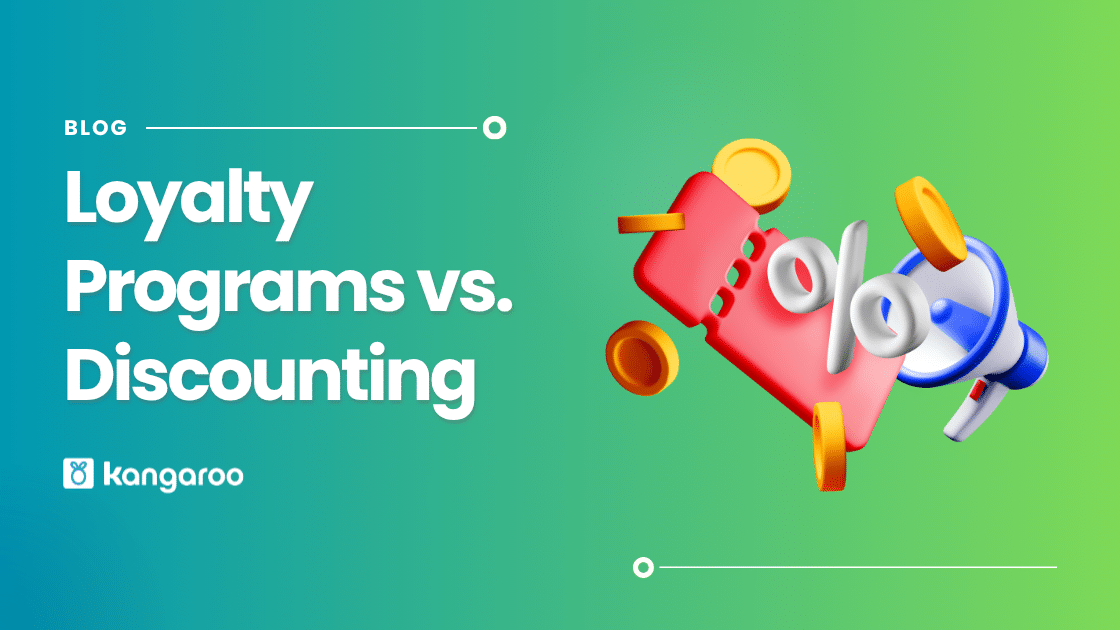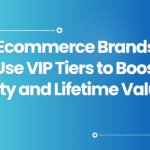Retailers love two levers: discounts that drive quick sales, and loyalty programs that promise long-term relationships. Both move the needle — but they do so in very different ways. If your goal is not just to sell once, but to build a predictable, profitable business that grows over time, you need to understand the economics and behavioral effects behind each approach. In this article, we’ll walk through the pros and cons of discounting and loyalty programs, show how each impacts revenue, margins, and lifetime value, and give practical guidance for when to use each tactic — plus a roadmap to design a loyalty program that actually increases profit (not just points).
The real question: short-term revenue vs. long-term value
Discounting is excellent for immediate outcomes: clearing inventory, lifting foot traffic, or rescuing a slow day. It’s transactional and obvious: cut the price, conversion goes up. But price-sensitive customers brought in by discounts are often the least loyal — they’ll buy when it’s cheap and vanish when it’s not.
Loyalty programs, by contrast, are relationship tools. They create reasons for customers to choose you repeatedly: exclusive offers, points, VIP treatment, or status. That repeated behavior compounds: higher purchase frequency, higher average order value (AOV), and lower acquisition cost per repeat customer. Over time, those effects can turn loyalty investments into healthier profit margins than constant discounting.
Why discounting can erode profit (faster than you think)
-Margin compression. Every percentage point off the price is margin eaten. If your gross margin is 40% and you offer 20% off, you’ve taken a big bite out of profitability — and you may not recoup it through volume alone.
-Customer conditioning. Regular discounts train customers to wait for sales. That lowers full-price sales and can lengthen the time between purchases, hurting lifetime value (LTV).
-Attracting deal-seekers. Many consumers who chase discounts have low loyalty. They shop around aggressively; their long-term value tends to be lower than that of customers who buy at full price.
-Impact on brand positioning. Over-reliance on discounts can cheapen your brand — especially harmful for premium or lifestyle brands.
Discounting, executed sparingly and strategically (e.g., to clear seasonal inventory), is valuable. But as a primary growth strategy, it risks trading margin for momentary revenue spikes.
Why loyalty programs can be more profitable — the mechanics
A well-designed loyalty program increases profitability through several interlocking mechanisms:
-Increased purchase frequency. Rewards give customers a reason to choose you more often. Even a modest lift in visit frequency has compounding effects on revenue.
-Higher average order value. Tiering, free-shipping thresholds, and points-per-dollar incentives nudge customers to add items to reach rewards.
-Lower churn and acquisition cost. Retaining customers is cheaper than acquiring new ones. A loyal customer base reduces reliance on paid acquisition channels.
-Data-driven personalization. Loyalty programs provide first-party data (purchase history, preferences) that power targeted marketing, improving campaign ROI.
-Cross-sell and upsell opportunities. Loyalty members are more receptive to offers, making cross-sell tactics more effective.
Put simply: loyalty programs change the numerator (sales) and the denominator (costs) of your profitability equation in a durable way.
Calculating the math: a simple LTV comparison
Let’s compare two simplified customer cohorts to make this concrete.
Scenario A — Discount-driven customer
-Average purchase (after discount): $80
-Purchases per year: 1.5
-Gross margin: 30%
-Retention (average years): 1.2
LTV = $80 × 1.5 × 1.2 × 0.30 = $43.20
Scenario B — Loyalty-driven customer
-Average purchase: $100
-Purchases per year: 3
-Gross margin: 35%
-Retention: 3 years
LTV = $100 × 3 × 3 × 0.35 = $315
Even with conservative assumptions, the loyalty cohort produces dramatically higher LTV. The difference grows when you factor in reduced acquisition costs and the marketing efficiency gains from first-party data.
Common loyalty program pitfalls to avoid
Loyalty isn’t a switch you flip — it requires design discipline. Here are mistakes that turn loyalty programs into expensive giveaways:
-Overly generous points with no behavioral lever. If points are easy to earn and easy to spend without changing behavior, you’re just giving away margin.
-One-size-fits-all rewards. Treating every customer the same wastes the chance to incentivize high-value behaviors (e.g., referrals, larger baskets, repeat purchases).
-Poor redemption value or friction. If customers can’t redeem rewards easily or the rewards are unattractive, the program fails to engage.
-Lack of integration. A loyalty program that’s disconnected from POS, e-commerce, or communications creates bad experiences and poor data.
-No measurement framework. Without KPIs (LTV, retention lift, incremental margin), you can’t tell if the program is profitable.
Kangaroo Rewards exists to help businesses avoid these exact pitfalls by linking POS and e-commerce data, enabling targeted campaigns and measurable outcomes.
When to discount — smart use cases
Discounts still have a place. Use them strategically:
-Inventory clearance: Move slow or seasonal stock. Time-limited markdowns are fine.
-Acquisition for high-margin products: If the lifetime economics justify it (e.g., you expect strong reactivation).
-Reactivation of dormant high-value customers: A small, targeted discount can bring a high-LTV customer back.
-Competitive, short-window campaigns: When the tactical need to drive traffic for an event outweighs long-term conditioning risk.
Important rule: always run discounts with measurement in mind. Use unique promo codes or trackable links to measure incremental sales versus cannibalization.
Designing a loyalty program that drives profit (practical blueprint)
Here’s a practical, battle-tested blueprint you can implement with Kangaroo Rewards or any modern loyalty platform.
1) Define measurable goals
Choose 2–3 priority KPIs: e.g., increase purchase frequency by 20% for members, raise AOV by 15%, or lift 12-month retention by 10 percentage points.
2) Create meaningful tiers
Tiers motivate progression. Example:
-Bronze: 1–$250/year → basic perks (birthday reward)
-Silver: $251–$750/year → 1.5× points, free shipping threshold reduced
-Gold: $751+/year → 2× points, early access, exclusive products
Tiers encourage customers to increase spend to unlock better benefits.
3) Reward behavior, not just spend
Points-per-dollar is the backbone, but layer on behaviors that shift economics:
-Bonus points for first purchase after signup (acquisition)
-Points for referrals (acquires lower-cost customers)
-Points for buying high-margin items (push products with better profit)
-Points for leaving a review (builds social proof)
4) Balanced earn and burn
Set earn rates so points aren’t cheaply redeemed. A helpful heuristic: make it so the average member needs multiple visits or larger baskets to redeem meaningful rewards. That ensures program activity drives incremental revenue.
5) Make redemption satisfying and simple
Offer choices: percentage off, free product, or exclusive experience. Low friction at checkout (POS or online) improves perceived value.
6) Personalize offers using first-party data
Use membership purchase history to send targeted offers: replenish reminders, complementary product suggestions, or VIP-only pre-launches.
7) Measure incrementality and profitability
Track:
-Incremental purchases from members (vs. non-members)
-Margin impact (not just revenue)
-CAC for referred customers vs. standard channels
-Retention lift and change in AOV
If members buy more but margins drop, iterate on reward structure.
How to test loyalty vs. discounts (A/B framework)
You don’t need to guess — run a controlled test.
-Segment similar customers into two groups matched by prior behavior.
-Group A: targeted discounts (e.g., 15% off email coupon).
-Group B: targeted loyalty offers (e.g., sign-up bonus points + 2× points for 60 days).
-Run for 3–6 months. Measure short-term conversion, AOV, and 12-month retention (or extrapolate using cohort decay models).
-Calculate profit-per-customer including margin, cost of rewards, and acquisition cost.
Measure incrementality: how much of the lift is incremental vs. cannibalization of full-price sales. You’ll usually find loyalty programs show smaller short-term lifts than heavy discounts but produce higher mid-to-long-term LTV.
Operational tips to keep loyalty profitable
-Segment thoughtfully. Different customers respond to different incentives. VIPs want exclusivity, casual buyers want discounts.
-Use scarcity and exclusivity. Limited-time member-only access drives urgency without slashing price.
-Automate lifecycle campaigns. Welcome sequences, post-purchase follow-ups, and replenishment reminders increase lifetime value with low incremental cost.
-Leverage referrals. Referral rewards typically have strong ROI because they convert at higher rates and lower CAC.
-Guard your margins. Regularly audit redemption costs and adjust earn rates if the program becomes too costly.
When discounting still wins
Don’t ban discounts. Use them when they’re the most efficient tool:
-Flash clearance
-Tactical competitive response
-Short-term traffic boosts tied to acquisition goals (but always narrow and measured)
The strategic mix: use discounts as targeted instruments and loyalty as the foundational engine for sustainable profit.
Bottom line: loyalty compounds, discounts cannibalize (if overused)
If you’re chasing a one-off spike, discounting can be the right choice. If you’re building a repeatable business that values margin, brand strength, and predictability — invest in loyalty.
A loyalty program, properly designed and measured, shifts customers from price-sensitive transactions to value-driven relationships. That shift doesn’t just increase revenue — it protects margins, reduces acquisition cost, and builds resilience against market swings. For most businesses, the smartest path is to combine both: use discounts sparingly and strategically, and make loyalty the central strategy for long-term profitability.



